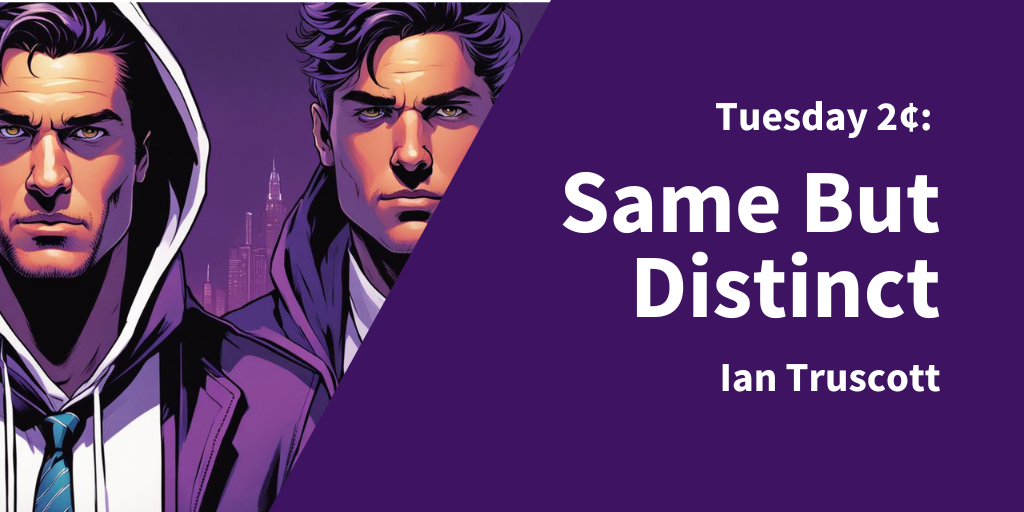This week, I share a bit more on differentiation. If you are in a crowded B2B category of “me too” and you can’t be that different, be distinct.
I’ve recently discussed differentiation in this column and the challenges it presents, especially in a crowded category where a buyer needs to spend some time with you to discover the differences between your product and the competition.
But, the buyer has no time, and I don’t mean we lack the attention (the “attention span of a goldfish” bollocks) I mean the buyer cannot possibly analyze every option available at any depth in their first pass of the market.
Your flippers and flappers may be the best, unique, leading or innovative, but right now, we need to earn the right to show them that.
As I’ve also been discussing recently, our job as marketers is to help the buyer choose. As a slight aside, I believe in the value of an early “no”—that it’s great when a buyer who’s not a great fit for your Ideal Customer Profile (ICP) decides not to waste your sales and marketing time. We’d rather spend time with our people or our tribe, as Seth Godin would call them.
I’ve digressed – it’s hard to find them in a crowded market where product differentiation is not immediately obvious.
The cruel irony is that the more you try to differentiate your product, the less different you look; in B2B, you can bet that ALL of your competitors are doing the same.
Plus, as soon as a new idea enters your category, everyone starts to copy it. Even if technically the product is not a great fit, it’s not hard for a competitor to use the mealy words of marketing to confuse the buyer.
And when you try to argue with that positioning, it makes you look like a scene from Monty Python.
“The Peoples Front of Headless? Fuck off, we are the Headless People’s Front.”
This might date me a bit… but it’s a classic.
The buyer, whose job is to choose, has no idea of the difference.
So, in some cases, in B2B, it’s a fool’s errand to try to grab attention through product differentiation unless you are VERY different—not just a little bit different.
Plus, being different has its challenges.
The first is whether the buyer sees the difference, as I’ve discussed. On the other hand, if you stray too far with a very differently positioned product or proposition, you may not have a category and market. It’ll be hard for you and your buyers to find each other. You need competitors to make a category in a market.
But, amongst them, you need to be distinct.
As the dictionary defines
“characteristic of one person or thing, and so serving to distinguish it from others”.
In this context, I’d add “immediately obvious” to that definition; it has to be something your audience grasps almost instantly.
Of course, it’s similar to when we discuss brand in that this is in the mind of the buyer, not something we can fully control.
If the buyer is aware of your brand, they will have created the distinctive attributes for themselves as shorthand for their recall. “the red logo people”, “the big complicated solution” or “the geeky ones”
Whatever it is, that’s how we think: In boxes.
So…
What is truly distinct about your company or product?
Is the way you tell the story of your category distinct?
I heard a quote on a podcast the other day that lodged in my head, although the attribution seems to have vanished, so you’ll have to take my word for it: The only way we have to differentiate is in how we communicate.
How is the way you communicate distinct?
You get the idea.
It’s OK if your proposition is not that different from your competitors, it proves you have a market – as long as you are distinct so the buyer can choose.
Fancy more of this?
Subscribe to my Rockstar CMO Newsletter

I’m a 3xCMO, now a marketing strategy advisor and podcast host at Rockstar CMO. Although, I’m not a rock star, but a marketing leader, strategist, content marketer, columnist, speaker, industry watcher, and creator of ART (Awareness, Revenue, and Trust) for the companies I work with. But most of all, I am an enthusiastic tea drinker.
You can find me on LinkedIn, Twitter, or now Threads! – or listen to my weekly podcast at Rockstarcmo.com
The half-baked thoughts shared on this blog may not reflect those of my employer or clients, and if the topic of this article is interesting or you just want to say hello please get in touch.
